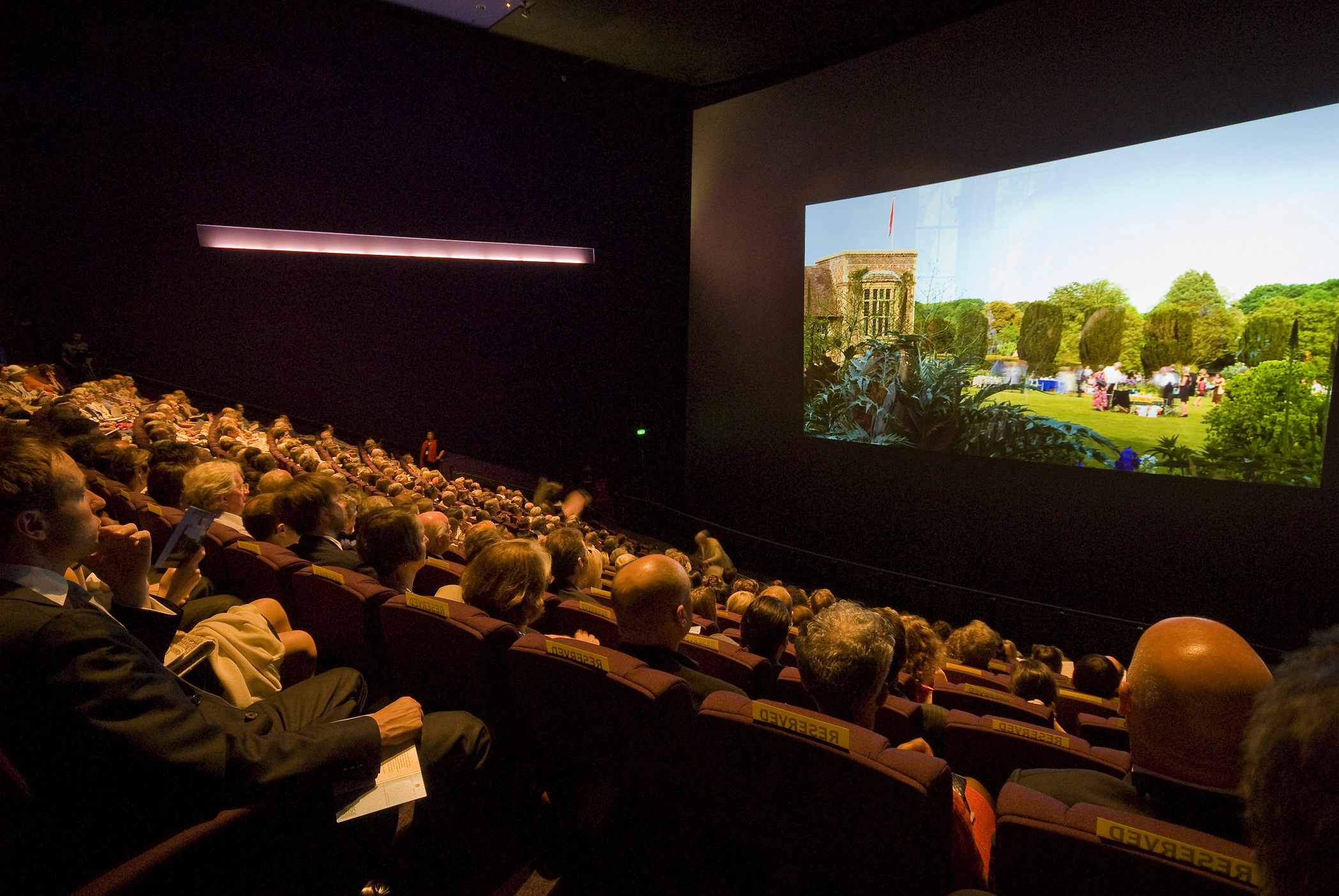
Glyndebourne live streaming at cinemas across the country
Photo: courtesy of Tim Hawigins
Streaming Out to digital audiences
Live streaming offers arts organisations the potential to develop new income streams by creating and presenting work in different ways. It isn’t just about showing your work for free, says Jon Pratty.
Catching up, I’m catching up. I can see on my TV monitor the faintest outline of my quarry, just a glimpse of light and a ghost of a figure shadowed against a wall. I’m going to catch him up and shoot him…only trouble is, at least 150 other people are trying to catch him too, and they might rub me out into the bargain.
What am I doing? I’m using new digital live streaming technologies to chase three young people round the streets of Manchester, who are equally keen to avoid being caught. They’re also trying to catch and ‘shoot’ each other. In reality, we’re only shooting with online cameras, wielded by the runners, and we’re sending text messages to our runners helping them spot the other chasers.
My fun was part of I’d Hide You by Brighton artists, Blast Theory, commissioned to kick off the Arts Council England (ACE) and BBC online arts channel, The Space, in May. This was an online game, and a real-life chase, at the same time. Typical of the work of Blast Theory, it used outside broadcast equipment and mixed up technology and intrigue with social media audiences too.
“It was a thrilling work to show” said Matt Adams of Blast Theory. ‘We had 12,000 games played in just nine hours. We saw clubgoers reeling and intimate moments of stillness in cafes and on streetcorners. One moment it was a game of cat and mouse, the next it was a live transmission capturing one night in Manchester.”
It’s just one facet of the way live video of performance action is developing. These days, live streaming might be about beaming opera as it happens from Glyndebourne, watching productions from the National Theatre in your local cinema via NT Live, or opening a new door into theatre or dance as you see work in development by the makers.
South Hill Park in Bracknell was recently awarded Grants for the Arts funding by ACE to develop live streaming facilities. Alongside offering an interesting open access model to arts companies in the Thames Valley, South Hill Park now has the chance to develop conference audiences. “Our live streaming project attempts to develop the value of arts content via digital distribution” explained Martin Franklin from South Hill Park. “We’re exploring different formats and models of engaging with a new online audience.”
As well as increasing the reach of creativity, these new technologies also offer venues new capabilities beyond cultural activity: once you’re set up for online streaming, you can also consider developing conference offers if your space is suitable, opening up new possibilities to develop extra income strands as well. So live streaming isn’t always about showing work for free. While many of us might expect content online to have no cost attached, others are happy to pay for excellent new work or glimpses of drama that can’t be found in the normal way.
But if online viewing is to succeed, the question of quality must be considered. Brighton Dome and Festival has just begun digital streaming experiments, also funded by ACE. This work was about learning the ropes and finding out how to develop online audiences artistically and in a sustainable way. Alongside a supportive relationship with City College Brighton, which has helped with video production facilities, Brighton Festival is working with a creative producer who will forward plan a video ‘slate’ or broadcast calendar for next year’s Brighton Festival, making sure that this is not just a case of switching on a single static camera and hoping for the best.
Jon Pratty is Relationship Manager, Digital and Creative Economy at Arts Council England
Join the Discussion
You must be logged in to post a comment.